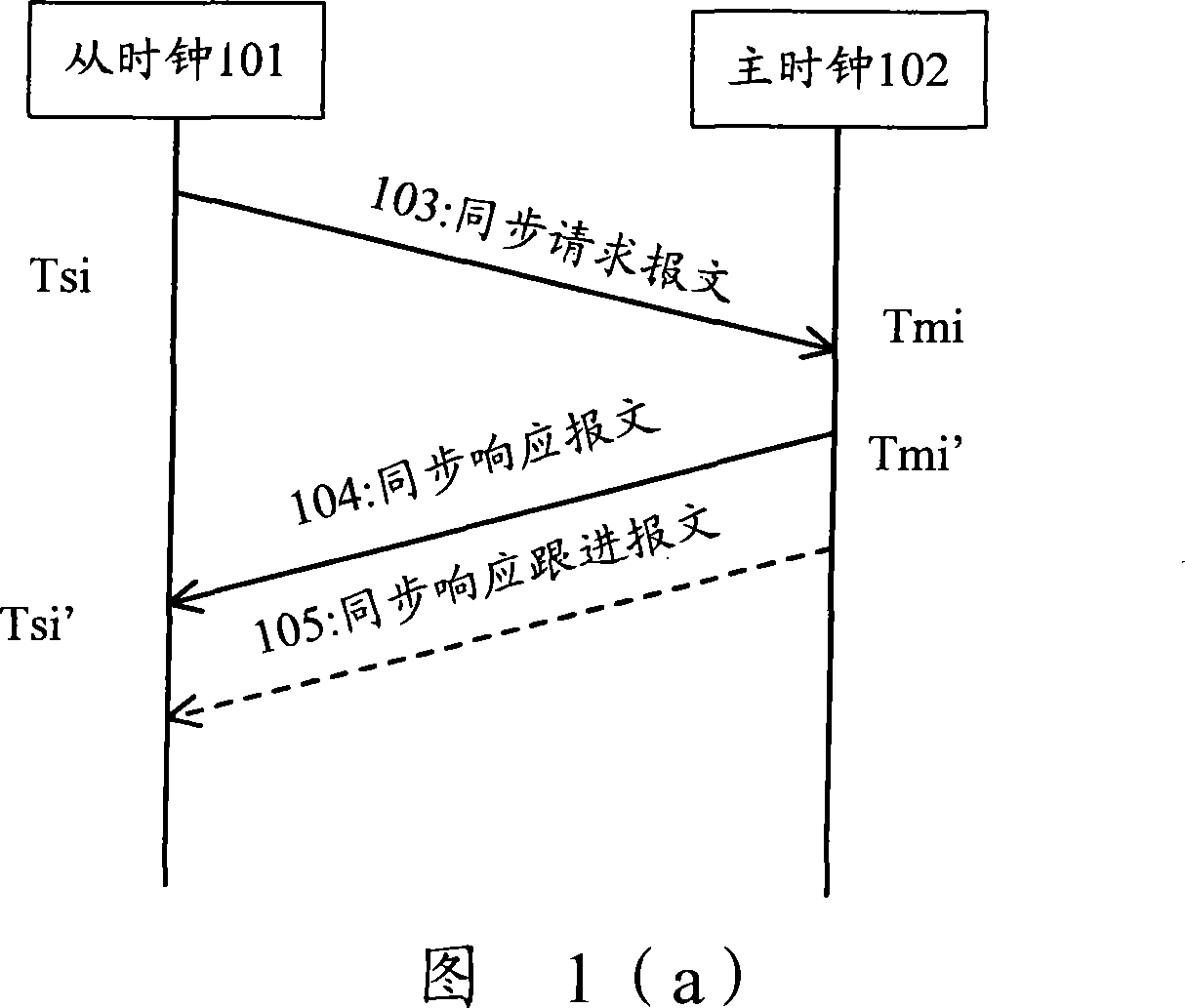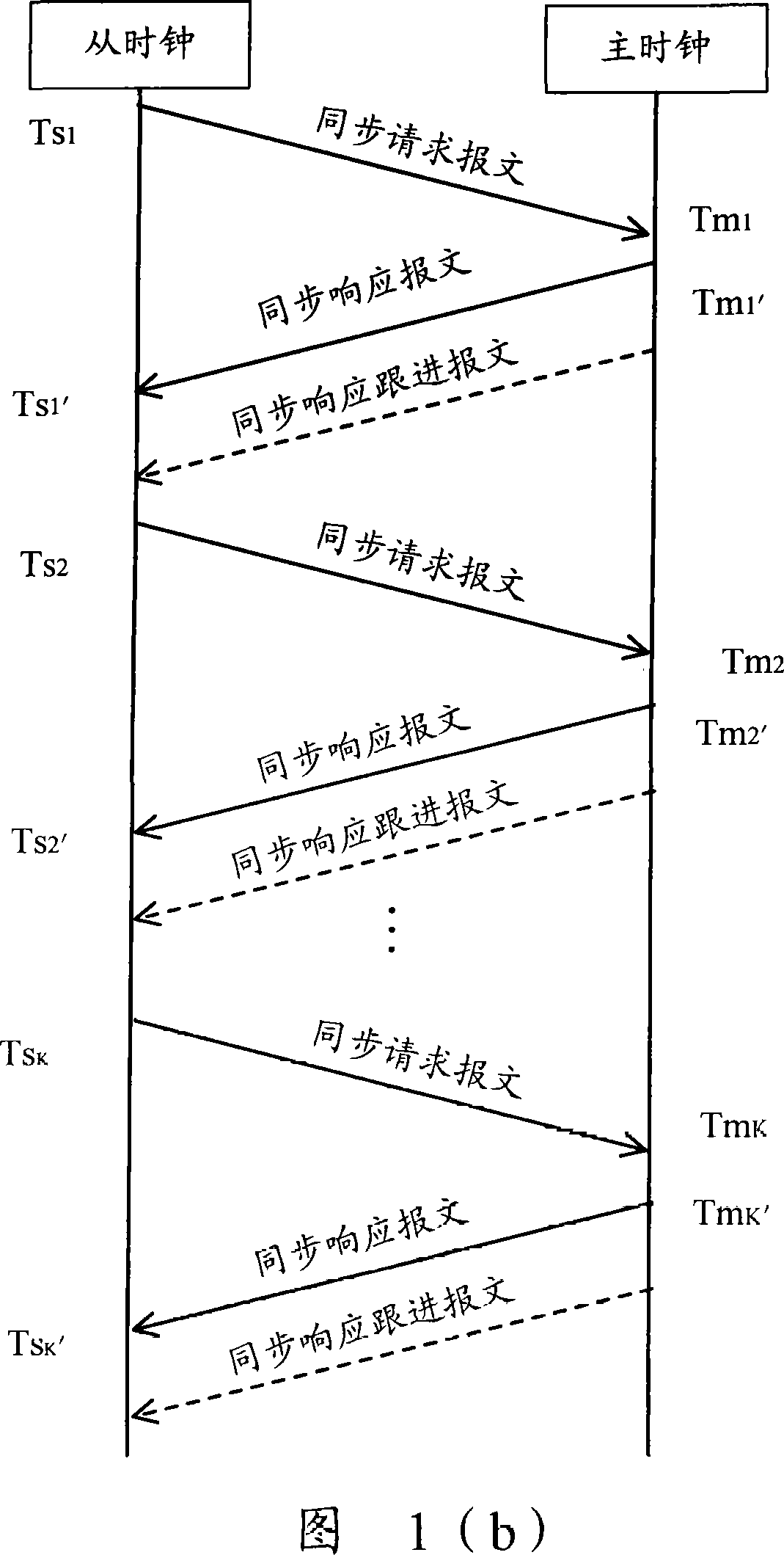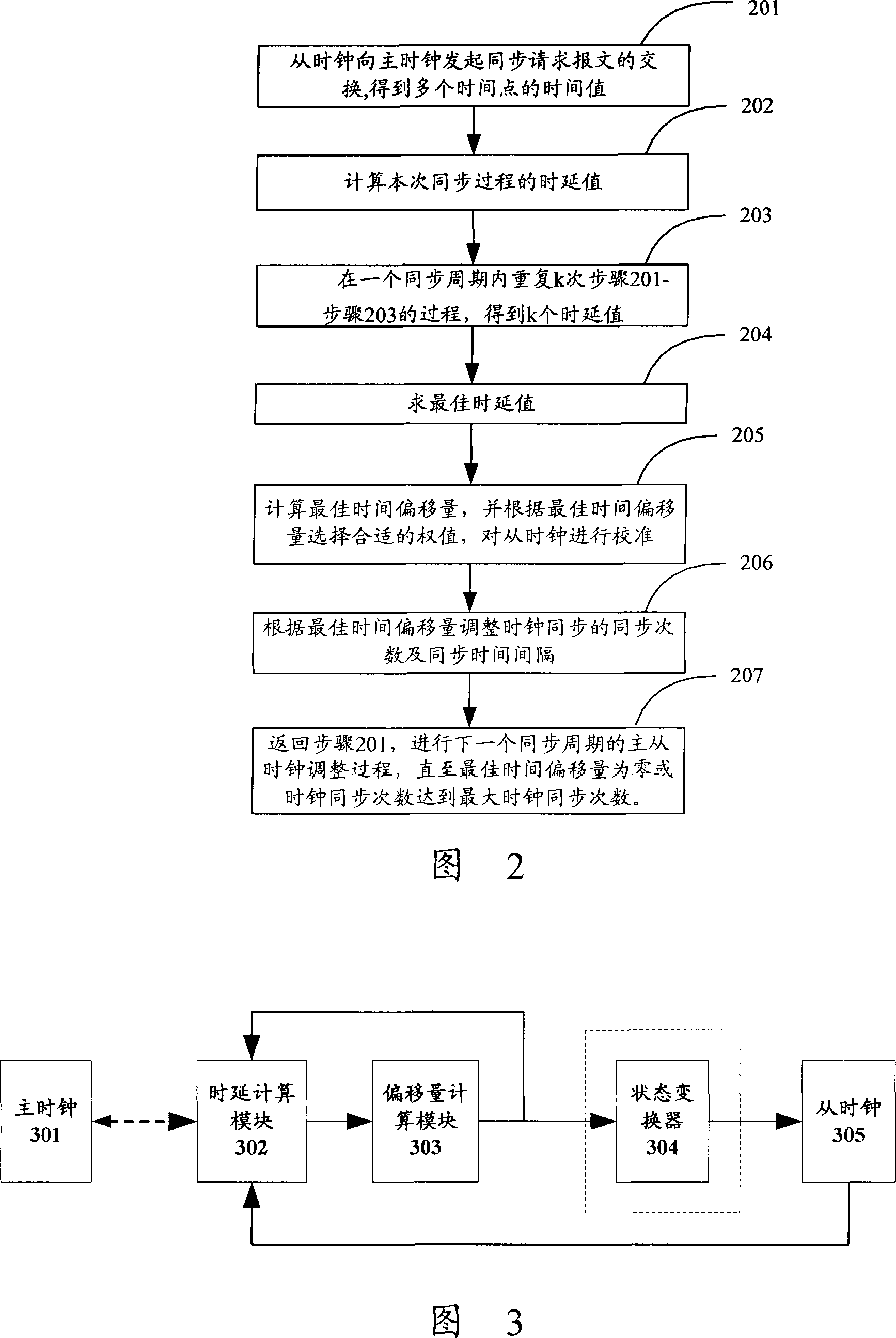Method and apparatus for master-salve clock synchronization
A clock synchronization and master clock technology, applied in time division multiplexing systems, electrical components, multiplexing communication, etc., can solve the delay error, the actual network channel is difficult to meet, and affect the stability of the master-slave clock synchronization state Sex slave clock accuracy and other issues
- Summary
- Abstract
- Description
- Claims
- Application Information
AI Technical Summary
Problems solved by technology
Method used
Image
Examples
Embodiment Construction
[0072] The method of the present invention will be further described in detail below in conjunction with the accompanying drawings and embodiments of the present invention.
[0073] Figure 1(b) is a schematic diagram of the k-times clock synchronization process in the embodiment of the present invention. As shown in Figure 1(b), the slave clock, as the initiator of the synchronization request message, performs j times with the master clock in a synchronization period For clock synchronization, k clock synchronization packets need to be exchanged for each clock synchronization.
[0074] Fig. 2 is the method flowchart of master-slave clock synchronization in the embodiment of the present invention, as shown in Fig. 2, the master-slave clock synchronization process in a synchronization period is taken as an example to illustrate, and this method comprises:
[0075] Step 201: The slave clock initiates the exchange of clock synchronization messages to the master clock to obtain tim...
PUM
 Login to View More
Login to View More Abstract
Description
Claims
Application Information
 Login to View More
Login to View More - R&D
- Intellectual Property
- Life Sciences
- Materials
- Tech Scout
- Unparalleled Data Quality
- Higher Quality Content
- 60% Fewer Hallucinations
Browse by: Latest US Patents, China's latest patents, Technical Efficacy Thesaurus, Application Domain, Technology Topic, Popular Technical Reports.
© 2025 PatSnap. All rights reserved.Legal|Privacy policy|Modern Slavery Act Transparency Statement|Sitemap|About US| Contact US: help@patsnap.com



